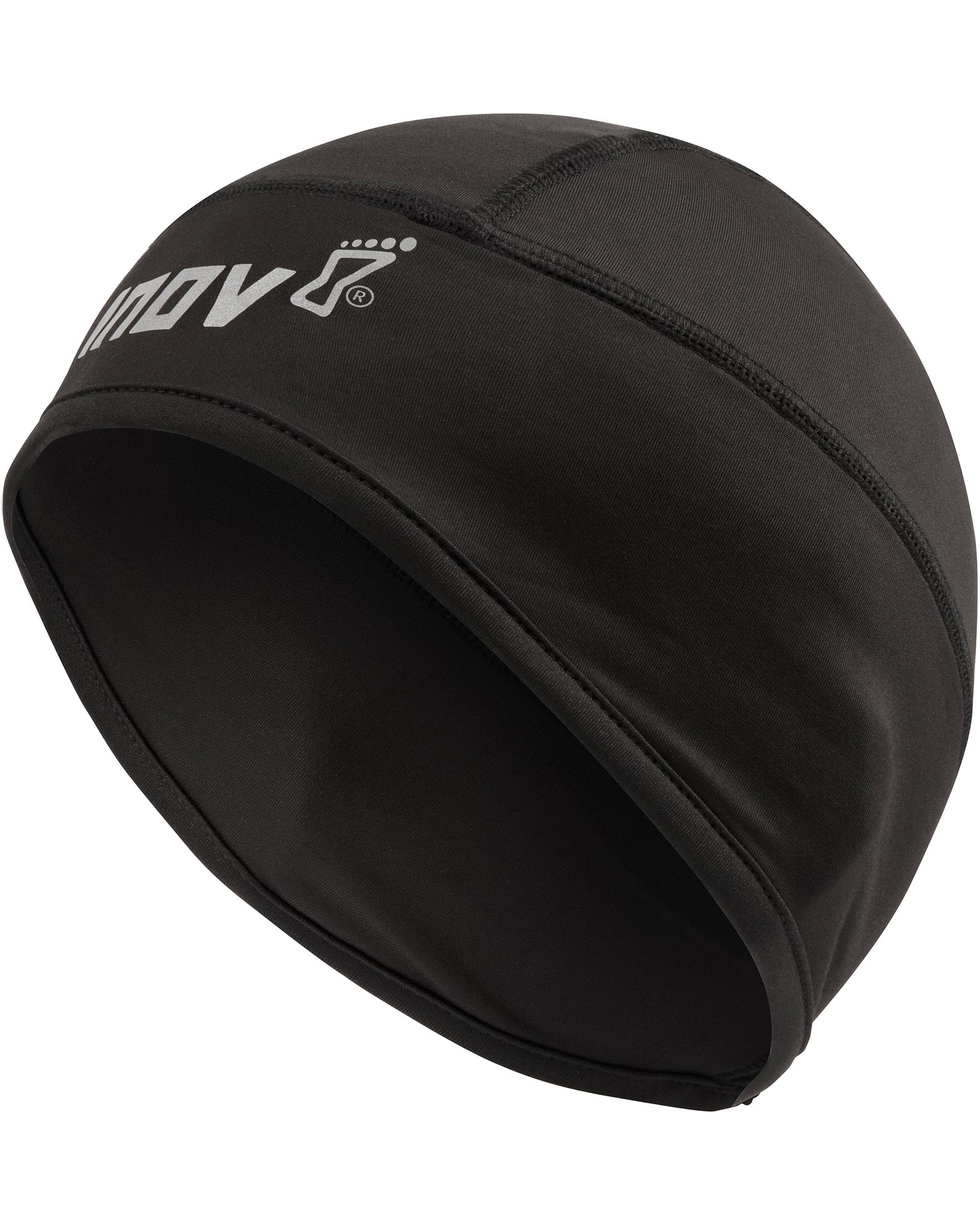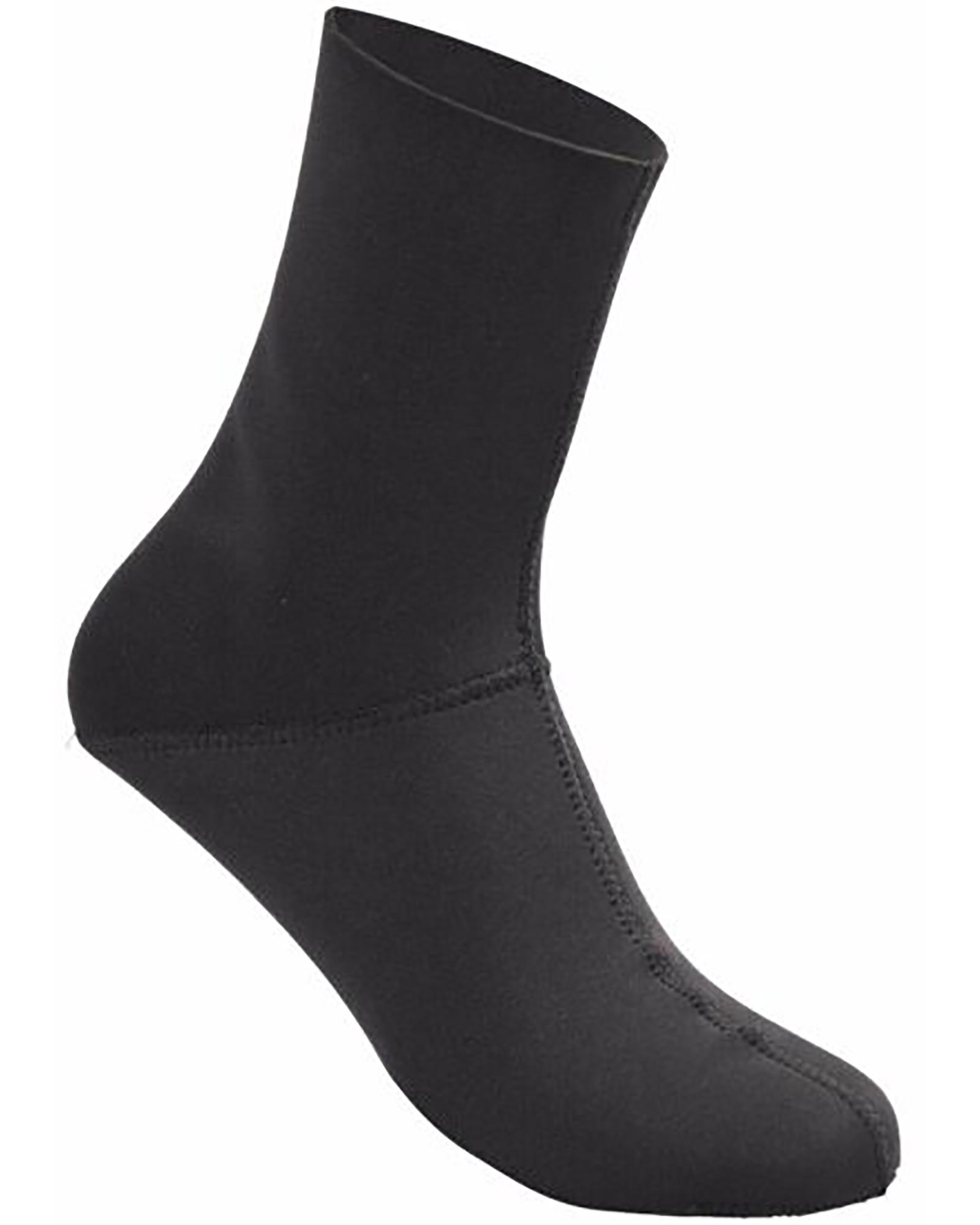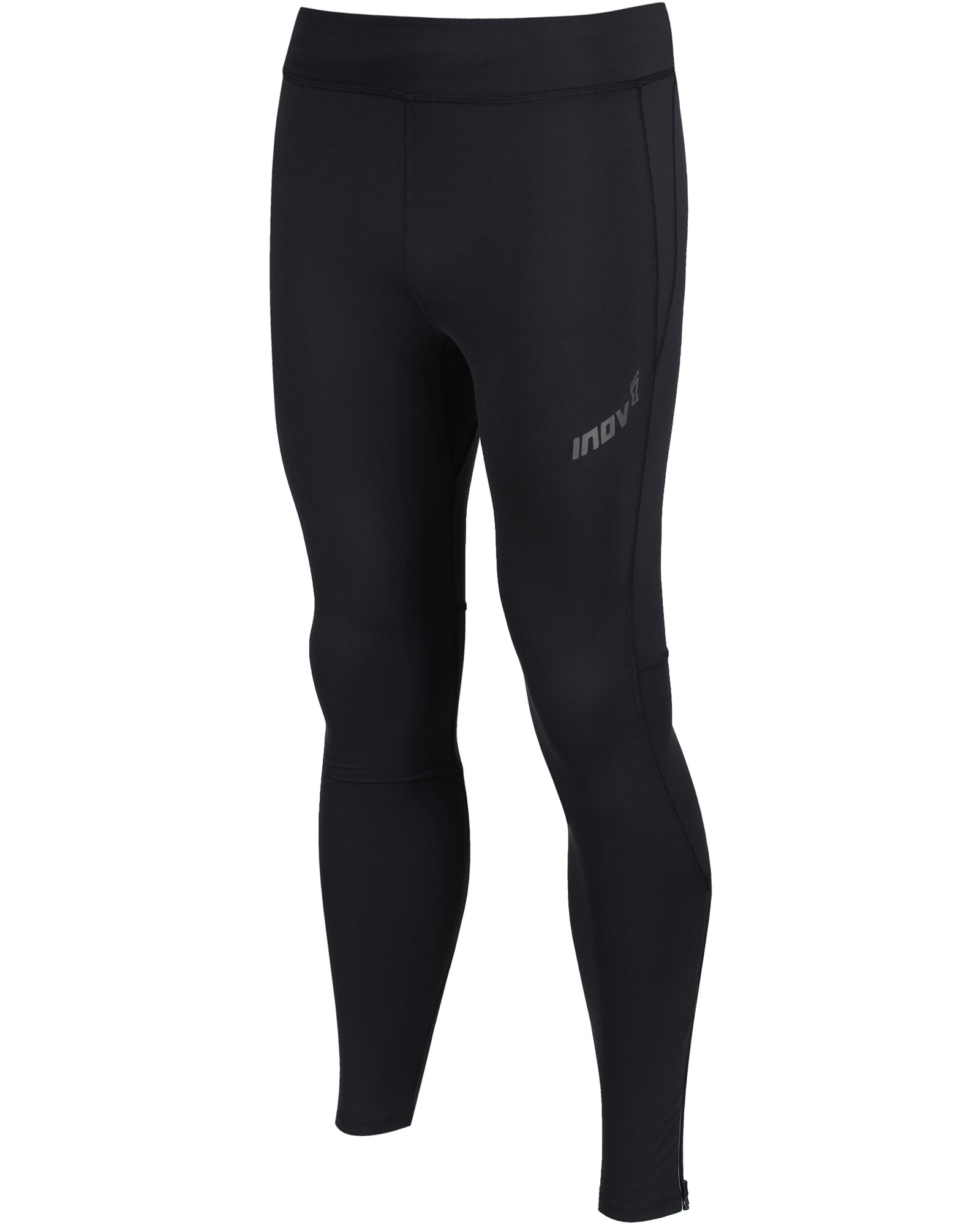Winterise Your Run
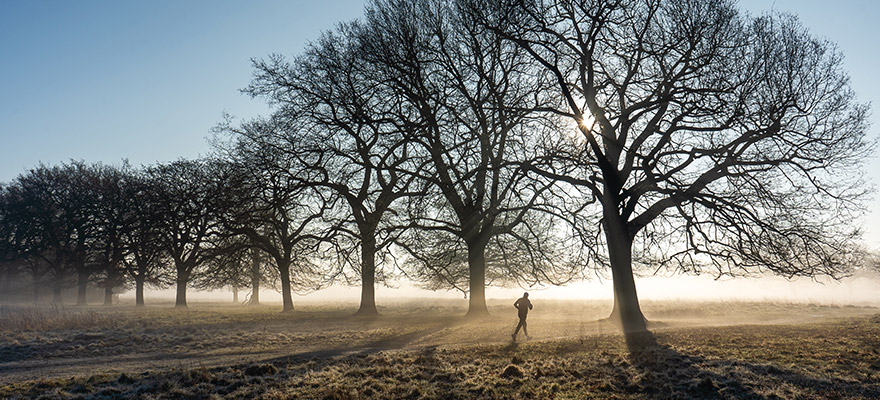
Image: iStock
Hitting the trails in winter is a very different experience to running in the summer. Trail running expert, Martin Bell shares some advice on how to power on through.
There’s nothing quite like running in winter. Those cold crisp mornings, the fresh breeze on your face, reminding you you’re alive, or the crunch underfoot from a light dusting of snow.
It’s not just the sensory pleasures either – running through the winter is the ideal time to build that base for any events you’ve picked to enter the following year. You’ll get a lot more enjoyment out of that spring marathon if you’ve put the work in over the winter. Of course, it’s not always easy. Shorter daylight hours mean most people will struggle to run after work, and dragging yourself out of bed on a cold winter’s morning – especially if it’s a cold, damp, winter’s morning, often feels impossibly masochistic.
Speaking from plentiful – sometimes painful – experience, however, I can safely say it’s pretty much always worth it. It helps that winter runs don’t need to be big long ones – even just a steady ticking over can make a world of difference to next year’s goals. But it’s also worth remembering that there are significant differences between trail running in winter and summer. From safety to gear to planning, here are a few things to consider.
Equipment
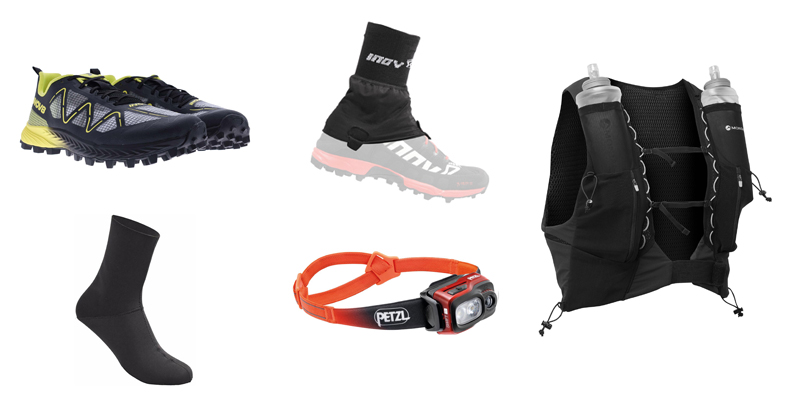
It’s worth investing in a dedicated pair of winter trail running shoes. Depending on the conditions underfoot, you may need some extra grip on your shoes, or even some spikes – such as Kahtoola MICROspikes – to prevent you from slipping. Make sure the upper contains GORE-TEX (or an equivalent like The North Face’s FutureLight) so that your feet stay dry.
Over-the-ankle merino socks should help your feet stay nice and warm whilst running, and if you’re likely to find deeper snow in places, then adding ankle gaiters will prevent it going over the top of the shoe. You’ll be needing a high-lumen head torch to keep you lit up and safe – and to see the terrain in front of you if you’re on a trail with no streetlights nearby.
It’s also worth thinking about your winter running vest – and in-vest-ing (see what we did there?) in something a little more capacious, to carry extra layers if needed.
Clothing
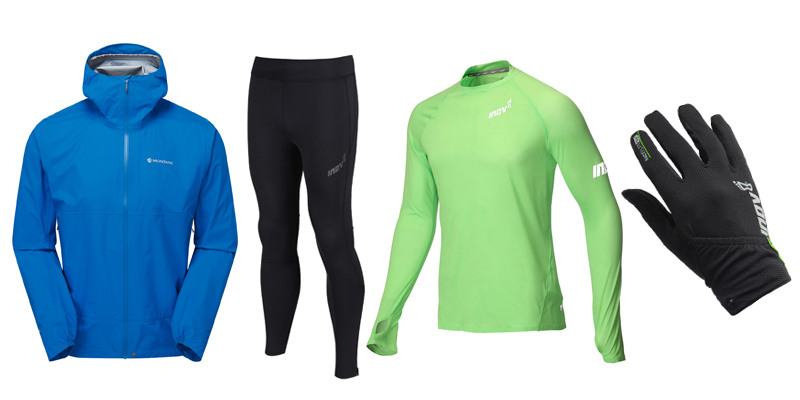
This one is obvious – you’ll be needing some warmer layers for sure. I find running tights instead of shorts make a world of difference, especially with the wind-chill factor. A long-sleeved running top next to the skin will help too, especially if you need to add a windproof or waterproof jacket whilst out on the run.
If you have a short-sleeved top under your jacket, your arms will feel cold and clammy, and no one wants that! Don’t forget a hat and gloves, or if you’re like me and suffer from Raynaud’s [i.e. poor circulation to the fingers] you might want to use mitts – they’ll keep your fingers together and are warmer than gloves. Trust me, my fingers can turn yellow just thinking about winter! I also like to run with a Buff around the neck on cold days, it really does make a difference.
Planning
I’ll always plan my trail runs more carefully in the winter – checking a map beforehand to work out the route, the total distance, and any elevation. The weather app on my phone gets checked numerous times the day before too, and I’ll even drive to a different location if the weather looks better. If I’m heading on a trail, 90 percent of the time I’ll be wearing my running vest.
Before I head off, I’ll write my route down on the whiteboard in the kitchen and be sure to tell someone where I’m going, and roughly how long I’ll be.
Safety Kit
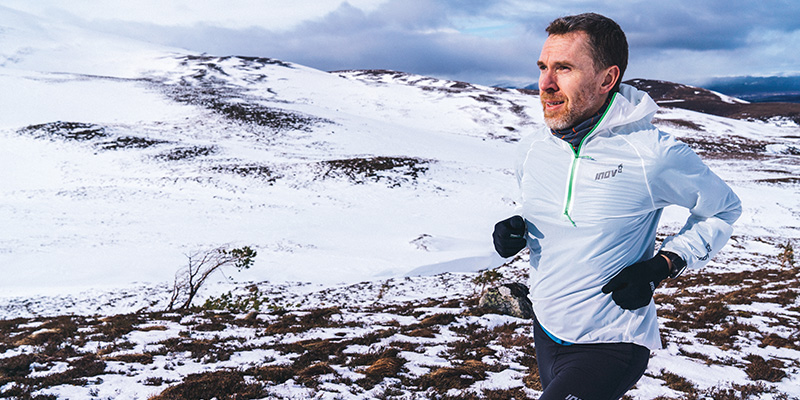
You shouldn’t underestimate the importance of safety kit at any time of year, but it’s arguably even more important in winter. You need to think of where you’re going – is it remote, and what’s the weather forecast? Always plan for the worst – the forecast can often be wrong! I pack a running vest with extra layers, including full waterproof body cover, spare warm layers and an extra hat and gloves. I’d also take snacks, a phone (with a spare charging pack, if need be), plus a first aid kit and survival bag. I know this sounds like a lot, but with the right gear it doesn’t have to weigh that much.
A couple of years ago, I was starting to descend a hill in late November (I remember the date, as I ruined my wife’s birthday!) when I went over my ankle and heard a crack – I’d fractured it, with some way still to go. I phoned my wife and she drove to the closest point at the bottom of the hill, as I slowly made my way down, and we spent the afternoon in A & E. If I didn’t have a phone with me, I’d have done a lot more damage to the ankle.
Motivation

Image: iStock
Let’s be honest, a lot of people struggle with motivation when it comes to running in winter. There are plenty of times when I’ve looked outside and it’s raining/cold/snowy (or a combination of all three) and I’ve thought “do I really want to go outside in this?” At those times I remind myself that it’s incredibly rare that I have gone out and regretted it – 99 percent of the time I’ll get back and be really pleased I made the effort.
It’s important to remember progress is made in small steps – if you can keep chipping away throughout the winter, your fitness and mental health will improve, you’ll be closer to those goals you’ve set for the following summer, and I can guarantee you’ll smile more.





